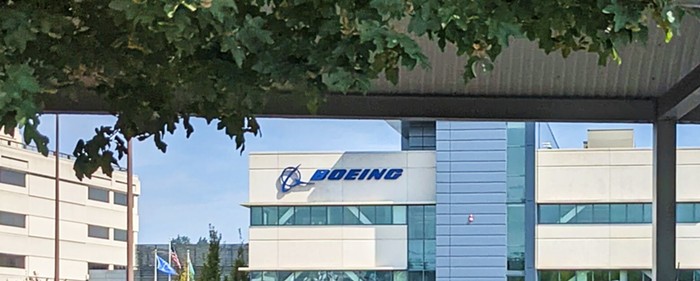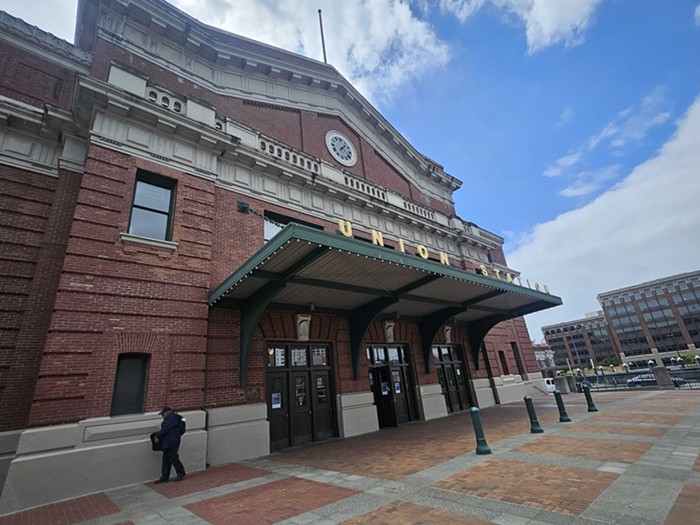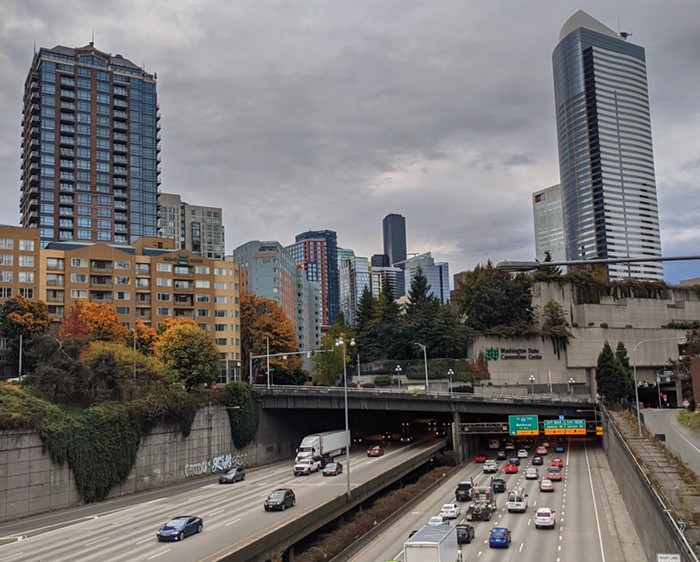
Imagine if every car came equipped with a camera that could detect when the vehicle’s blocking a sidewalk, crosswalk, or bike lane, and sounded an alarm to nag the driver back to where they’re supposed to be. What bliss! Well, bliss for everyone except drivers, who would be incredibly annoyed that their car is telling them how to drive. Oh well!
Alas, such dreams are nowhere close to coming true for cars, which kill 1.35 million people a year. But a monitoring system along these lines is coming soon to electric scooters (which have been implicated in 27 deaths nationwide in three years), whether you want it or not.
Spin is now the fourth company offering scooters around Seattle, and theirs come with a technological twist: They’re always watching. According to the company, the scooters can tell if you’re riding on the street, bike lane, or sidewalk; and if you’re on the sidewalk, it’ll sound an alarm.
Why?
“We categorize scooters the same way people categorize bikes,” says Sara Dodrill, communications manager at Spin. (Bicyclists are allowed to ride on sidewalks in Seattle.) The Spin app instructs users to only ride in the street, noting that “people walking, especially those with disabilities or small children, will be safer and more comfortable when motorized vehicles keep their distance.” The app adds, “riding on the sidewalk may be illegal,” which it is in most of the city.
Widely available scooters are a new phenomenon here, and just as Americans were terrified of elevators when they were first invented, scooters seem to have the power to make some people absolutely lose their minds.
According to a press release from Spin, “Spin Insight uses AI and computer vision to address one of the biggest concerns for cities - sidewalk riding.”
"One of the biggest concerns"? Last year in Seattle, car collisions killed 24 people, 13 of them pedestrians, and there were 144 serious-injury collisions. But yeah, sure, sidewalk riding is the bane of our existence, why not.
Given that cars cause a lot more mayhem and dismemberment, why doesn’t the city require cars to detect when drivers go over the speed limit or menace pedestrians? Well, you know why — because it would be annoying for drivers. Nobody in their right mind would want to own a car that sounds a chime every time they break the law, which is why you can easily buy devices to disable the seatbelt alarm.
Not to mention, I’m skeptical that this new tech will make scooters safer. Seattle’s “bike network” isn’t a network at all, and unless you’re traveling in a straight line along Broadway or 2nd Ave, eventually you’re going to find yourself mixing with fast-moving, aggressive traffic. And then you’ll have to decide — do I risk my life in the street, or use the sidewalk to get where I’m going?
A few weeks ago, I had a work thing down at the aquarium, and I took a scooter to get there. For the last leg of my journey, I rode on the sidewalk, because I am not insane. Can you imagine trying to share the road with cars on Alaskan Way, especially at 9 am when the sidewalk is completely empty?
“It all comes down to the individual user and their comfort level,” says Dodrill. “I look for bike lane infrastructure ... but if you're a more experienced rider, you might have a different comfort level.”
I’ve been using bikes and scooters as my main method of transportation for years, and I doubt there’s any level of experience that would make me feel safe riding in the street 100% of the time. Sometimes the sidewalk is simply safer, which is why Seattle sometimes specifically directs cyclists to use them instead of the street — like where East Madison Street meets 12th Ave by Pony, or by the Convention Center, or at the southern end of Broadway. Sometimes there are metal plates in the road for construction projects. Sometimes cars go faster than the speed limit.
Seattle just doesn’t have safe streets, because we redesigned the whole city around cars a few decades ago and like to pretend that we can’t just change it back to how it was.
To be fair, Spin has a division that’s dedicated to working with cities on fixing their car-focused infrastructure. They helped build (temporary, one-day) bike lanes in Milwaukee and Utah; they helped build outdoor seating areas in London; and they helped organize a street planning workshop in DC. Nothing planned for Seattle right now, Dodrill says.
For now, Spin is in the process of gradually rolling out their fleet in White Center and West Seattle before expanding to the rest of the city. (The scooters are able to travel around Seattle right now, they’re just being deployed to a few neighborhoods at a time.) The plan is to have 1,000 on the ground in the next few weeks; currently they have seven local employees to manage the fleet but they plan to hire ten more.
We’ll find out in the next few weeks just how capable Spin’s AI is at keeping people safe, or if it encourages riskier behavior by nudging riders into the street when the sidewalk would be better for all parties concerned. For now, keep an eye out for the scooters and let me know what your experiences are like.
Long-term, I’m fantasizing about the day that car companies are forced to include devices that limit their speeds, GPS that prevents them from driving and parking where they’re not wanted, and cameras that sound an alarm when they’ve left their lane. It’s worth noting that Spin is owned by Ford Motor Company. Maybe the car people can learn a few things from what the scooter people are doing?



















